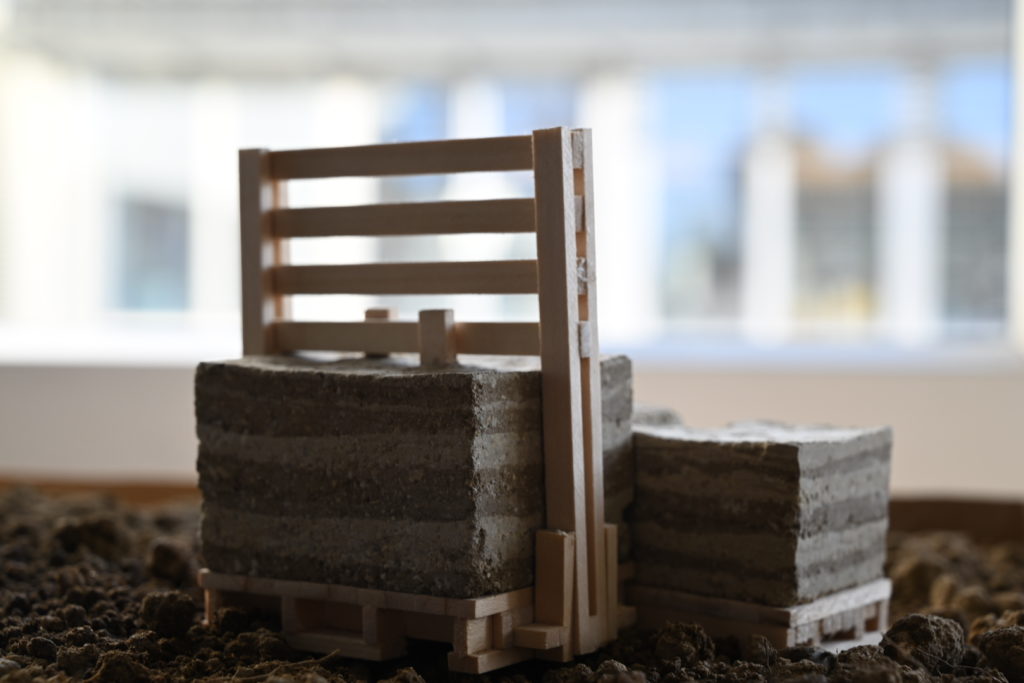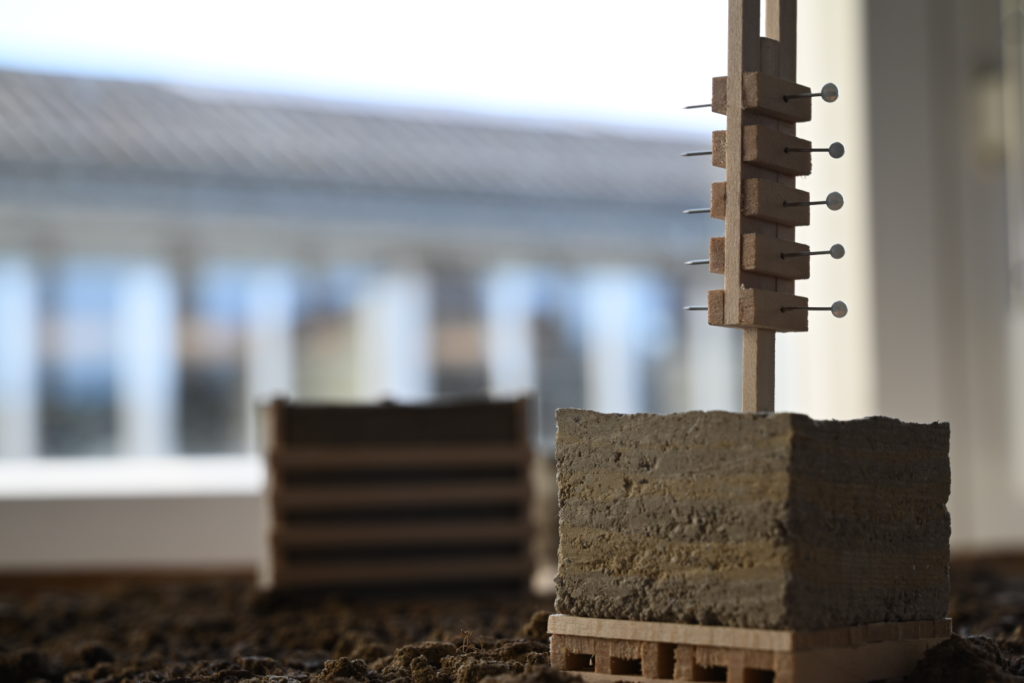The main purpose of our model was to understand how we could create a volume and a mass with rammed earth, as well as how rammed earth can interact with wood in order to create modules that can be added to it.
Before even starting our models with wood and rammed earth, we decided to create simple shapes with cardboard, so as to better understand the volume of a human body, according to measurements based on people from our studio, as well as little siblings so that we had measurements for children as well. We also created small volumes in order to see how different masses and sizes compare to the human body.
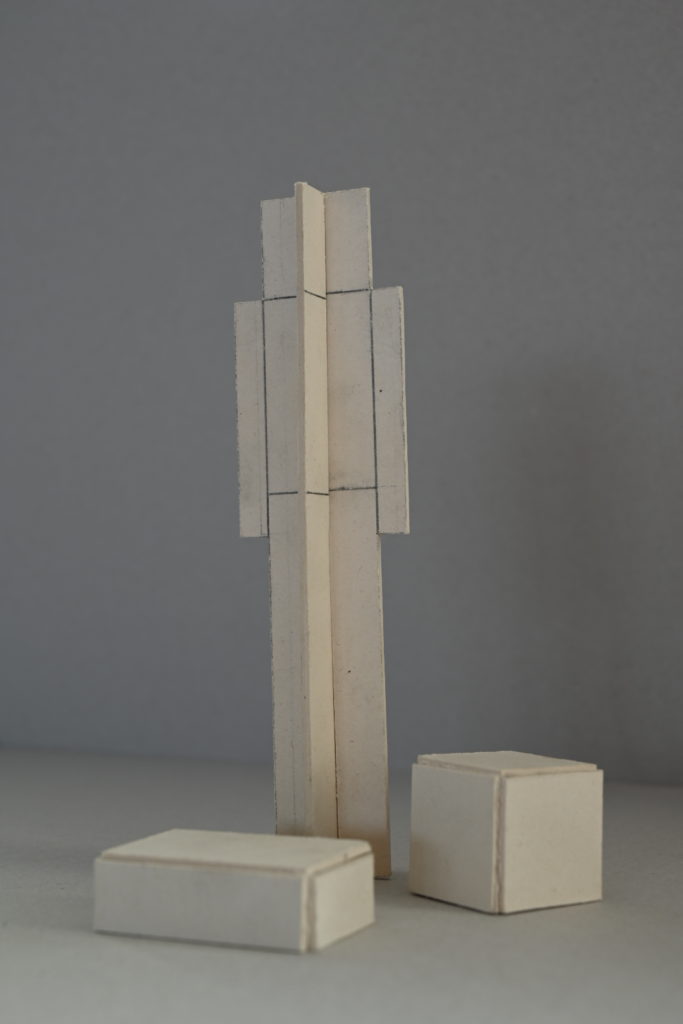

First week of tests
After having observed how the volumes thus created interacted (for instance the minimum distance necessary between two blocks for a person to walk between them), we decided to experiment with the largest dimensions we would allow ourselves; that is, a 70cm high block. The objective was to come up with an efficient wooden structure that could support the weight of the rammed earth as we rammed and prevent capillary rise, as well as potentially serving as a frame to attach modules to our blocks.
We decided to add wood on all four of its corners as well as in the centre to create various places to easily connect wooden modules (which we did with a test for a backrest). However, we quickly observed that the mix we had used for the rammed earth was too damp, and after it had dried, the model had lost a valuable portion of its volume in relation to its 1:10 scale.
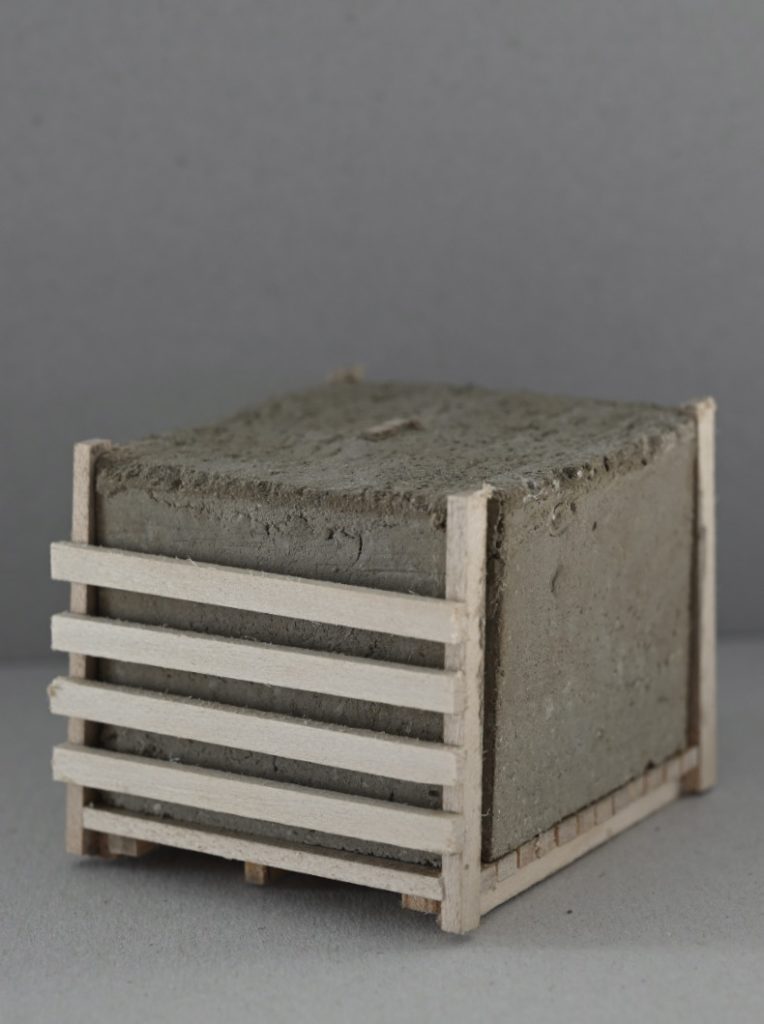
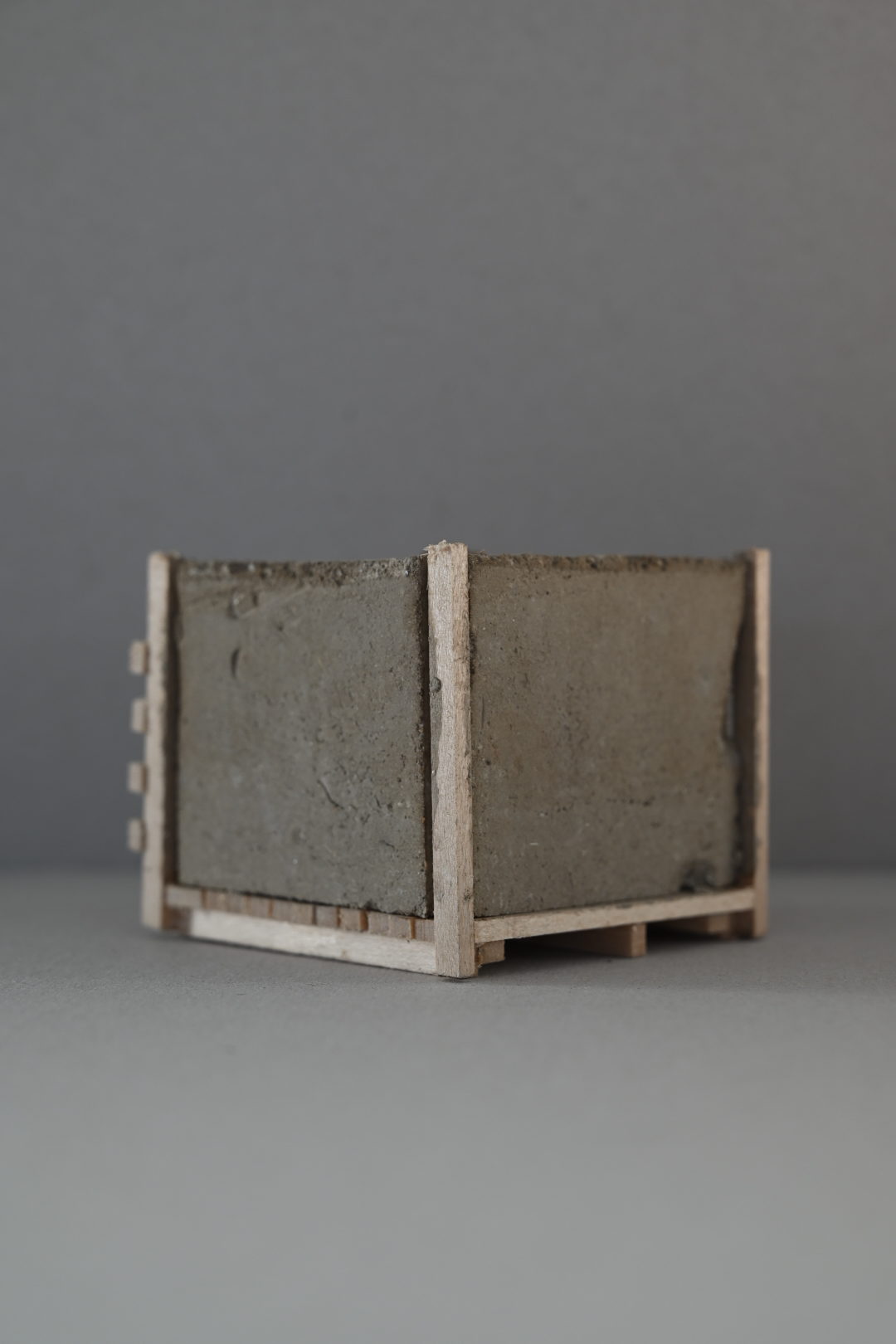
Another test we ran around the same time was the experiment of slits within and on top of our blocs, which would allow light wooden installations to be imbricated in them. The slit within the block was unfortunately too weak and didn’t remain intact very long with the movement of wood we subjected it to. That block also put emphasis on the structural deficiency of the wooden frame on its corners, with one of the sticks even breaking, forcing us to rethink a new structure. The block with a slit on top of it was not to be connected directly with its wooden base and simply laid on top of it. This one worked the best out of the two, but was inadvertently damaged.
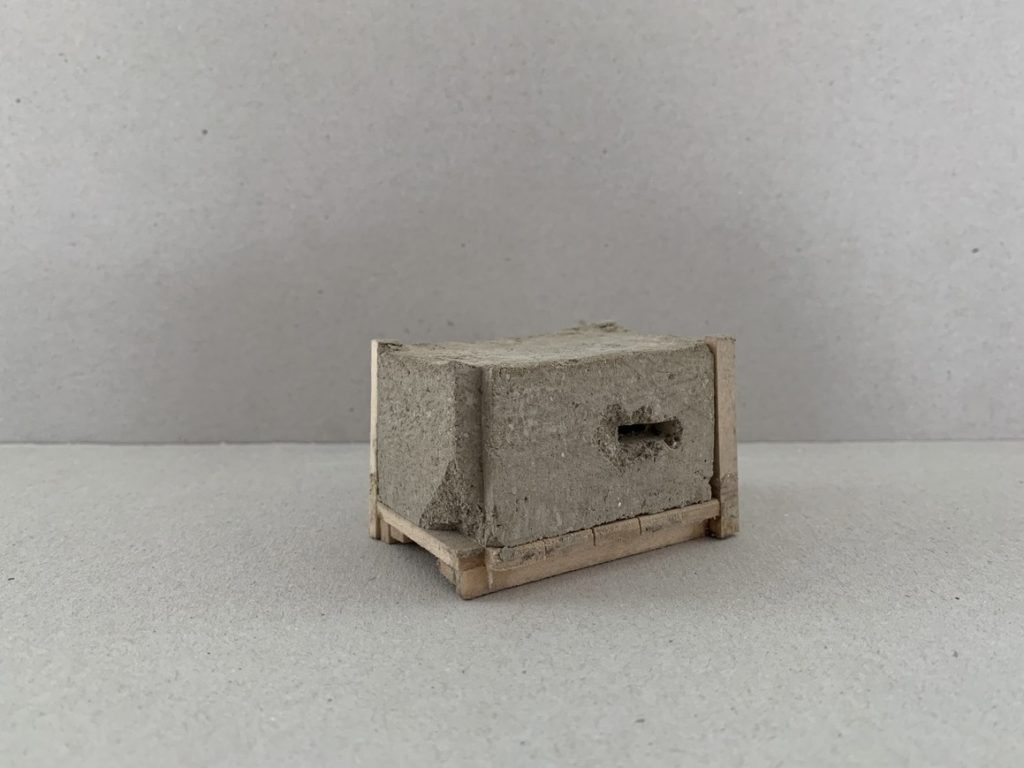

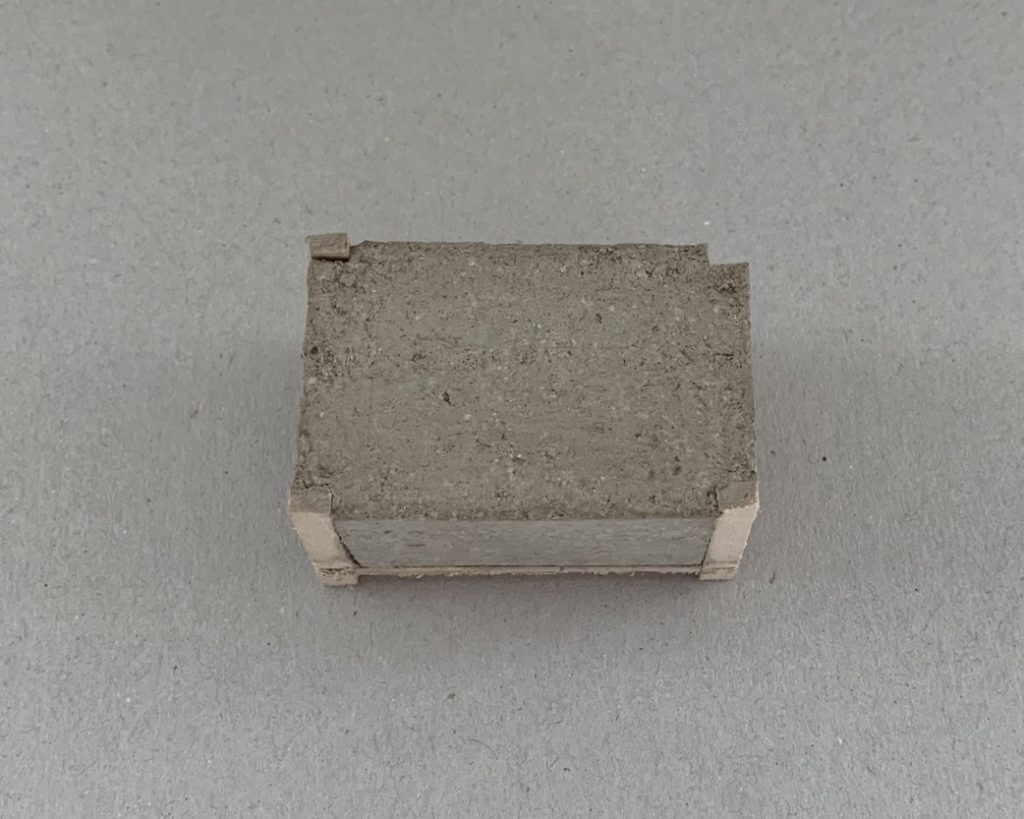
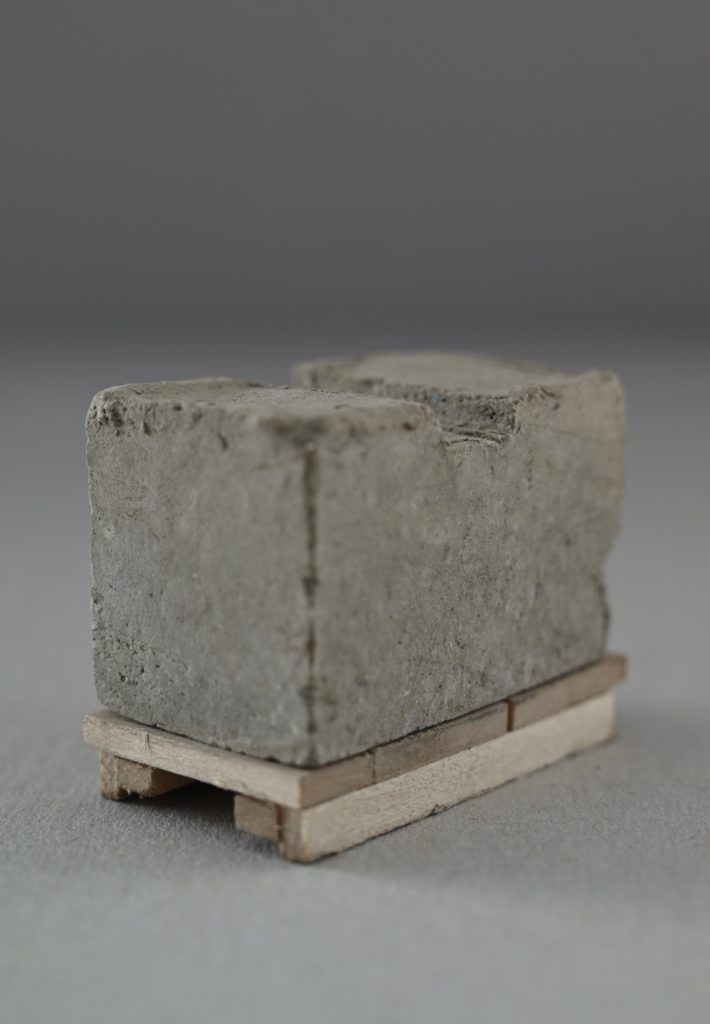
Lastly, as the idea of a veil to be stretched above the top of the slope started to arise, we decided to run one last test to experiment with the length a lambourde or another vertical element could be if it were to be held by the rammed earth while supporting additional weight (like that of a veil and its movements), as well as its distance from the edges of the rammed earth blocks.
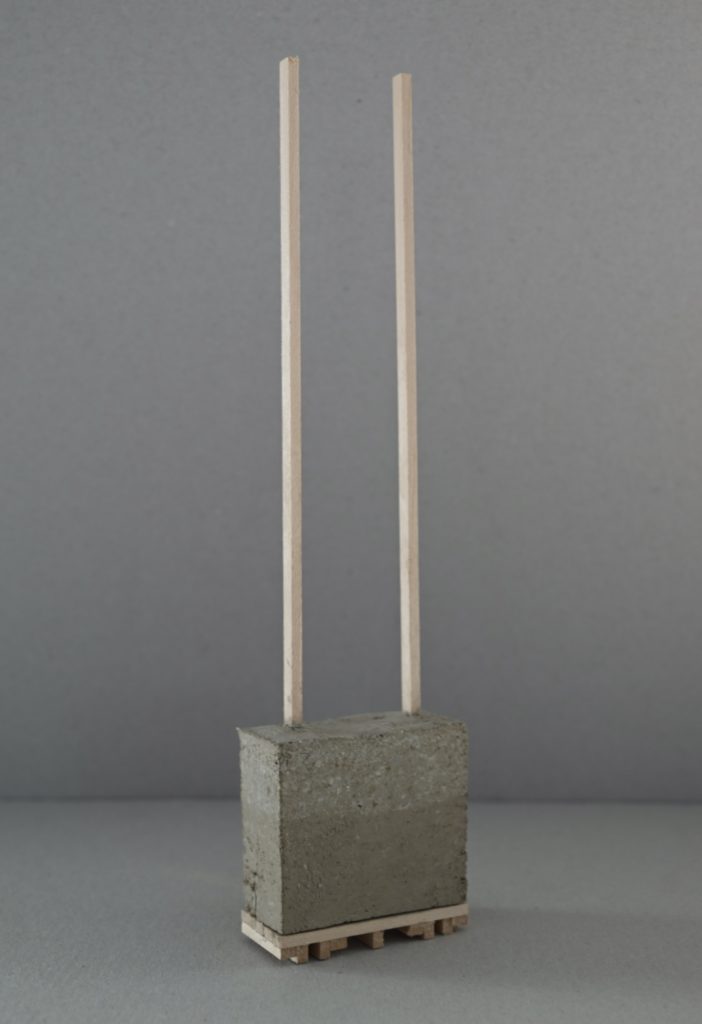

Second and last week of tests
Going forward, we tried to solve the issues of the shrinking, the structurally weak corner joints, as well as trying to find new ideas for wooden modules. We also decided to try out decorative patterns in the rammed earth, as we established that aesthetically pleasing blocks would increase their use and thus the impact of our project.
We first tried a new version of a block with a slit at its top, which once again proved to be quite fragile, indicating that a real block would struggle to withstand weight near such slits.
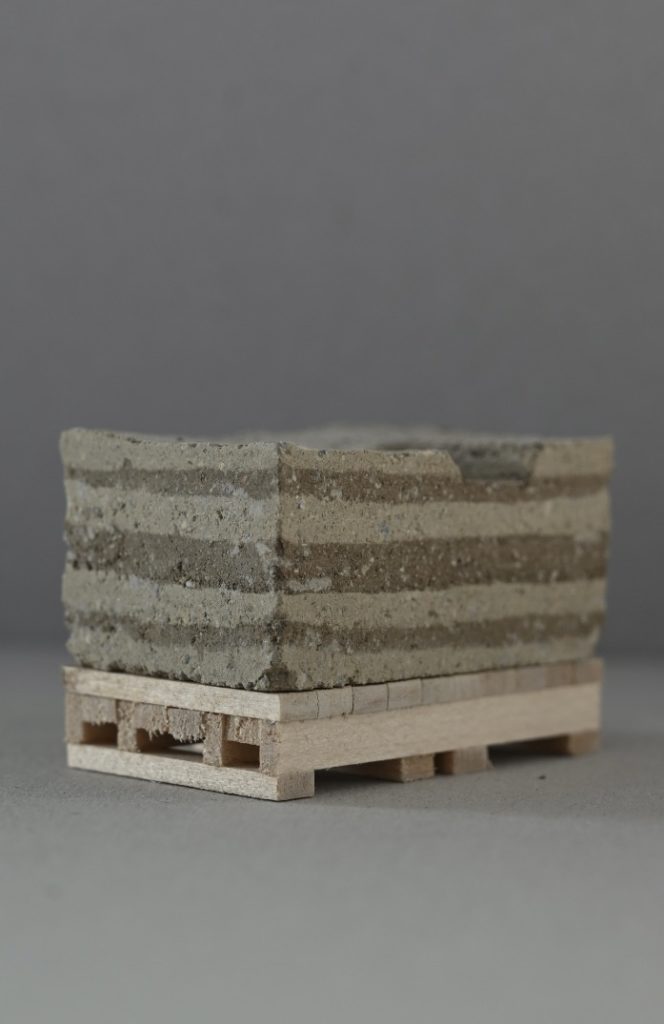
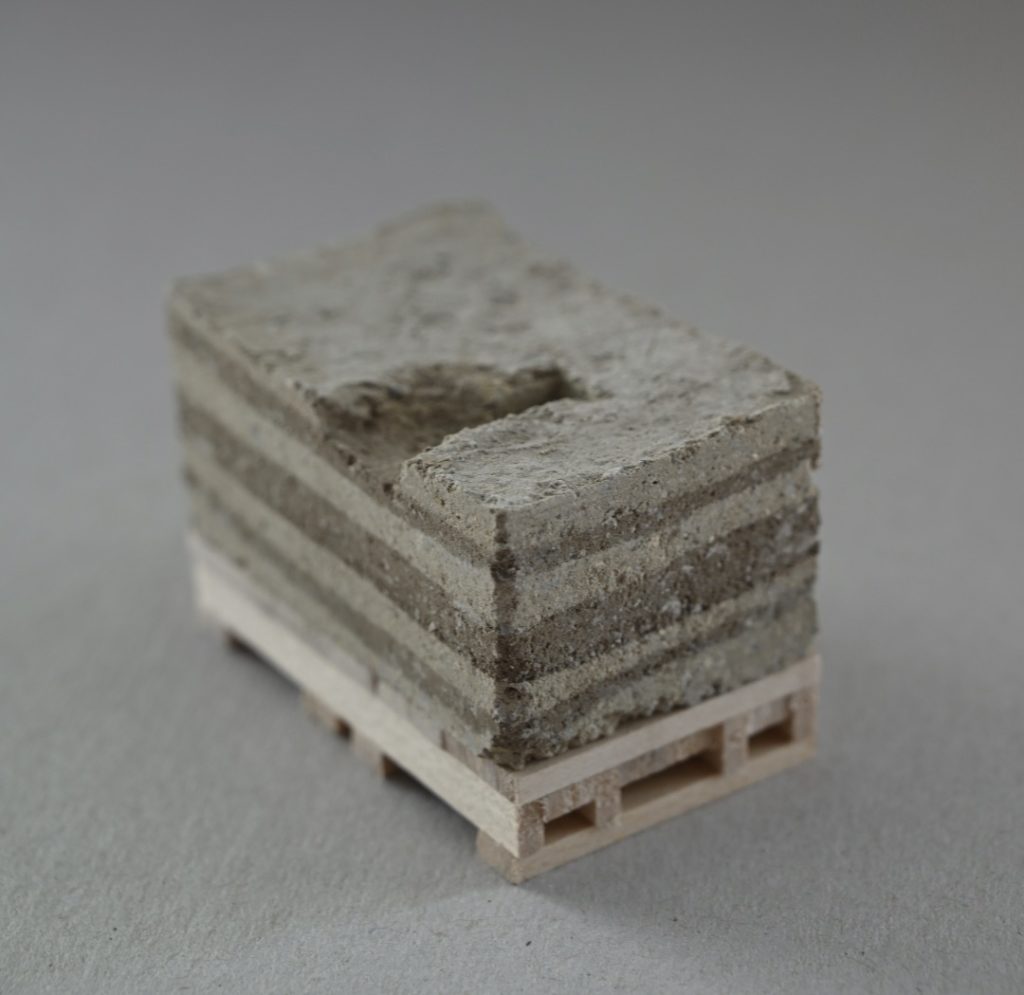
Another test with more slits but stronger ramming nevertheless worked better with the weight it had to support, showing that it is perhaps the stronger ramming that makes a real difference.
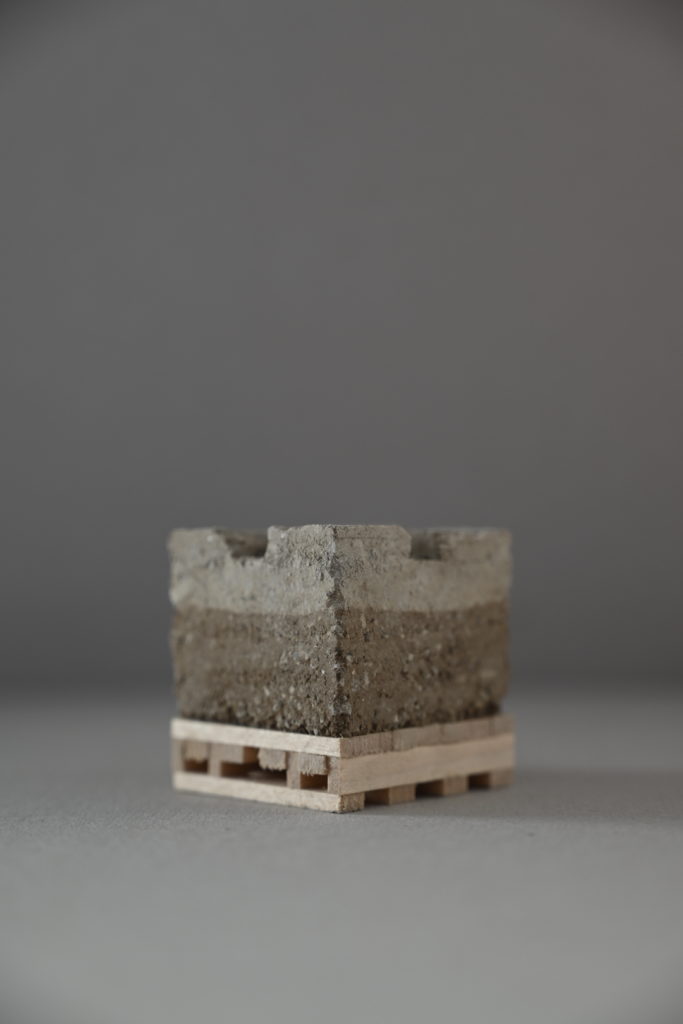
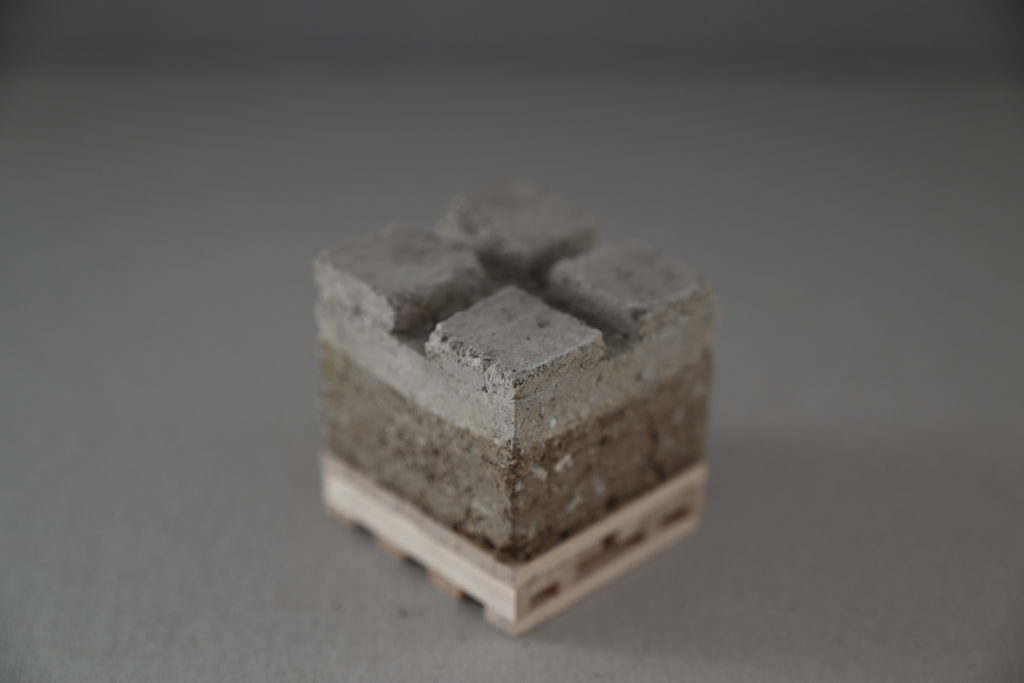
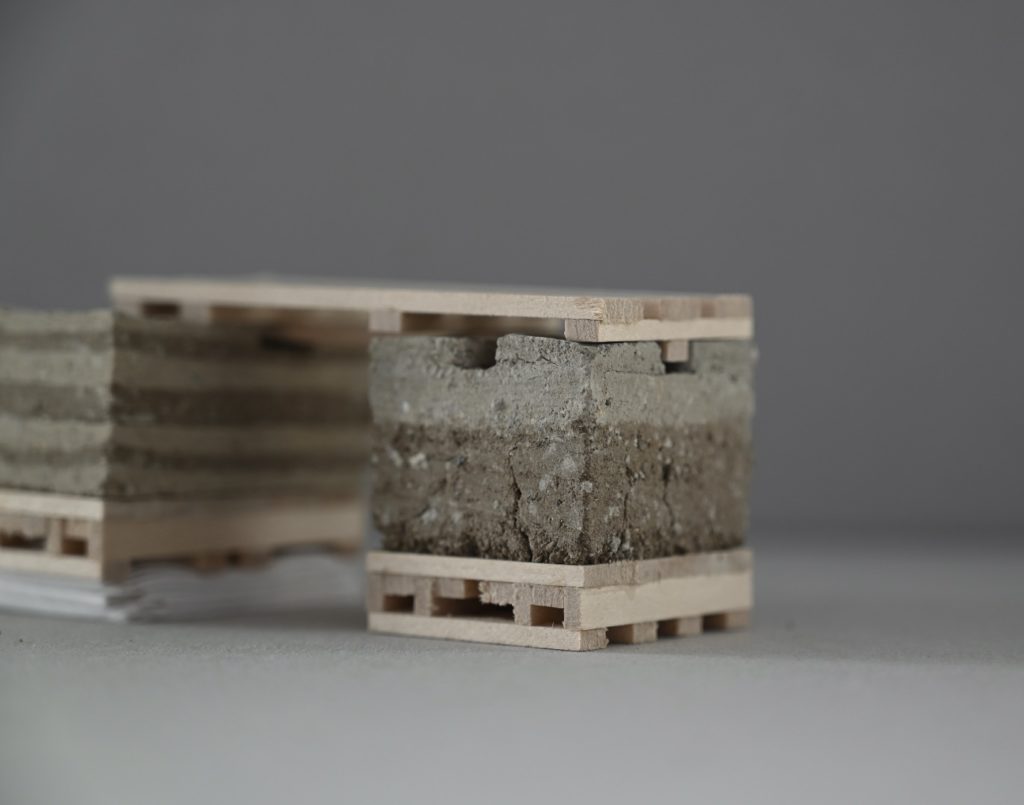
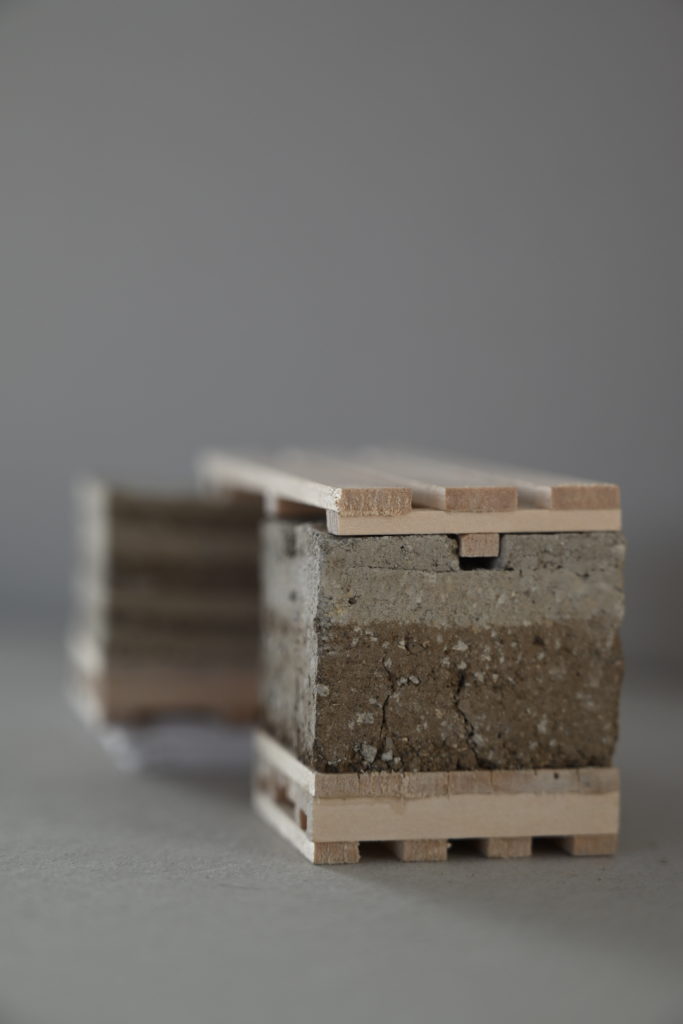
Before moving on to the block that was to support the weight of the vertical element holding the veil, as well as other wooden modules, we created a smaller block in order to put in perspective the dimensions of the other.
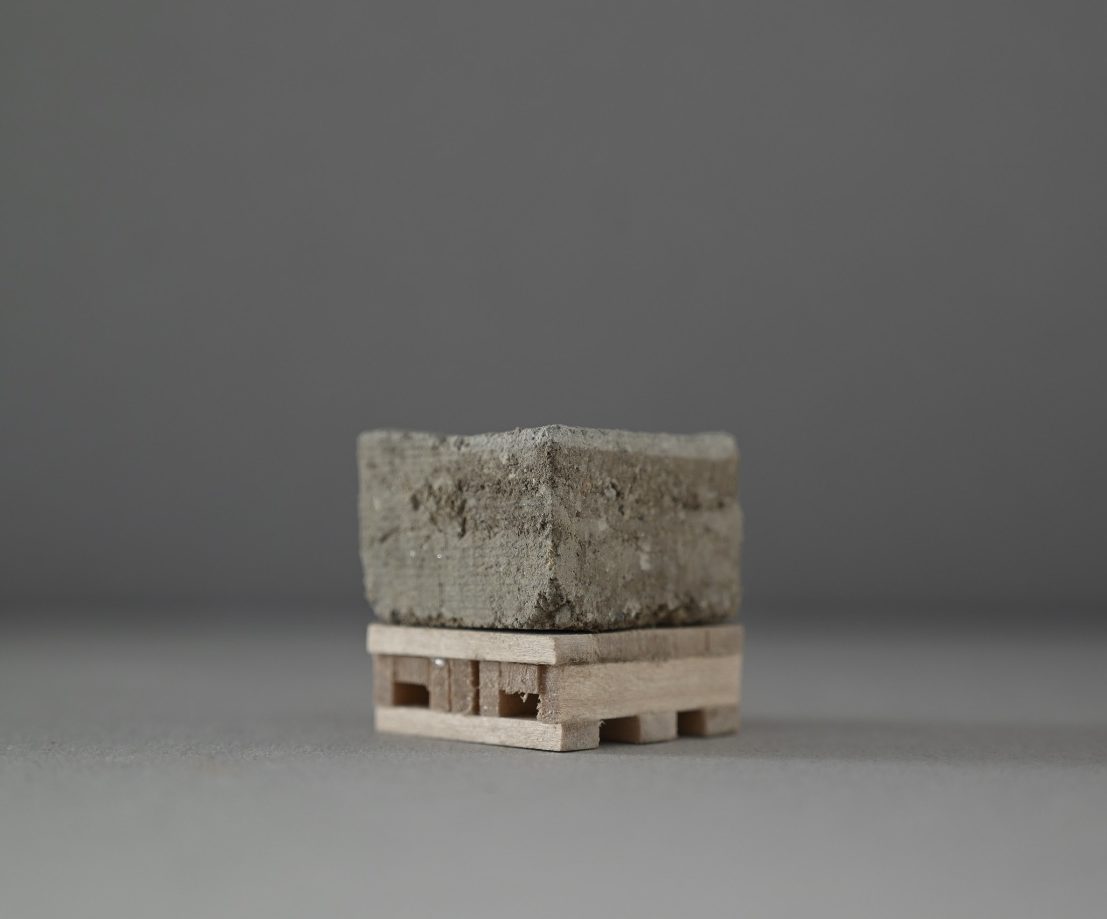
We then came up with a final version for the block that was to support the vertical element holding the veil, taking into account a minimum weight of 215kg, as well as making the vertical element adjustable, and detachable during the winter or the days that a veil is not needed.

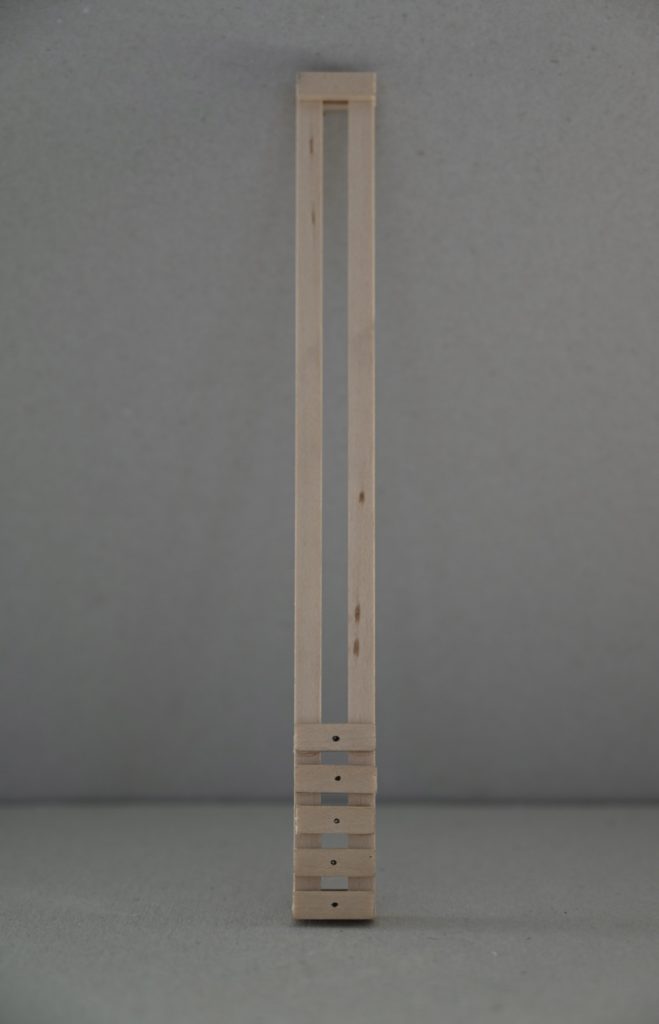
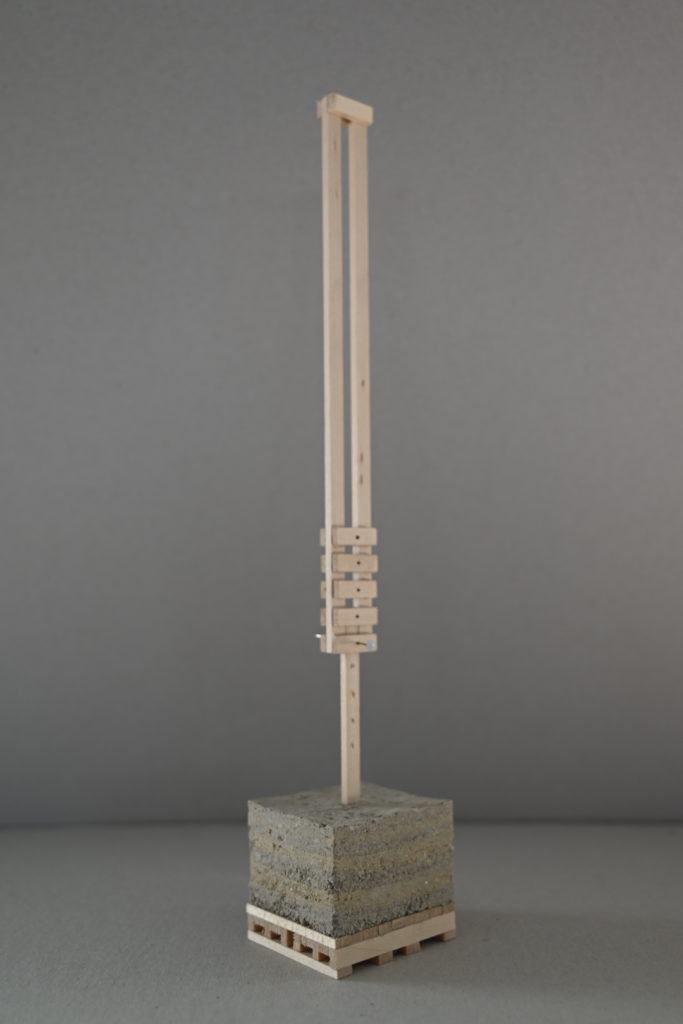
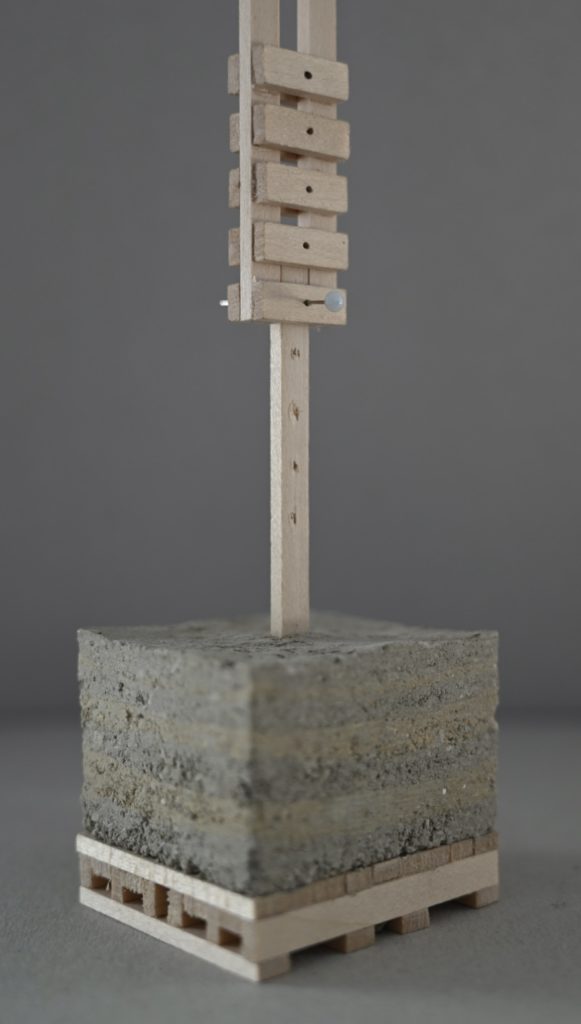
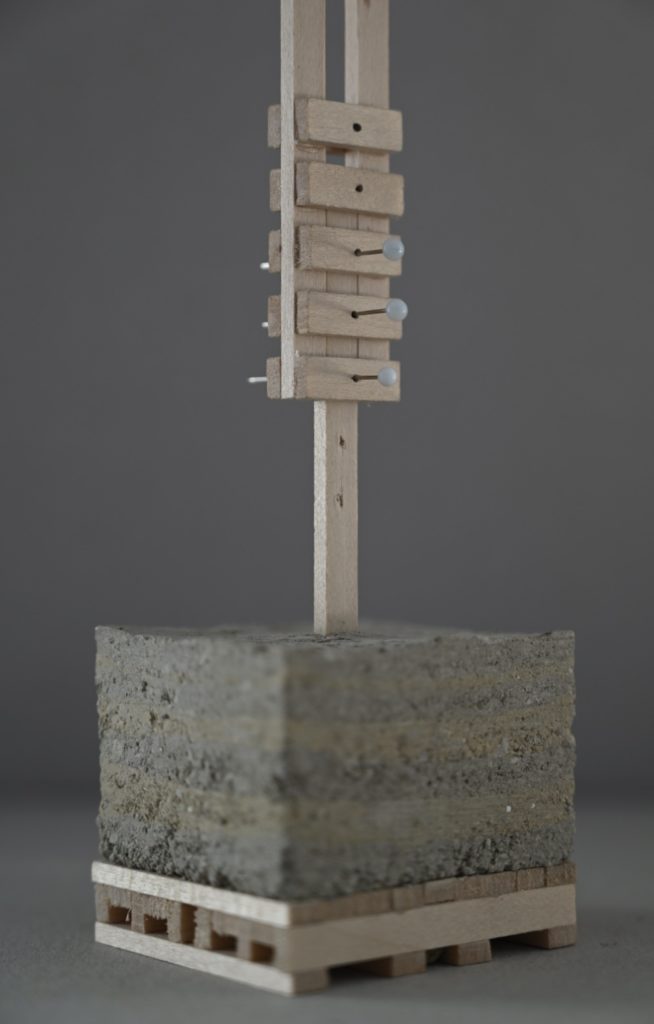
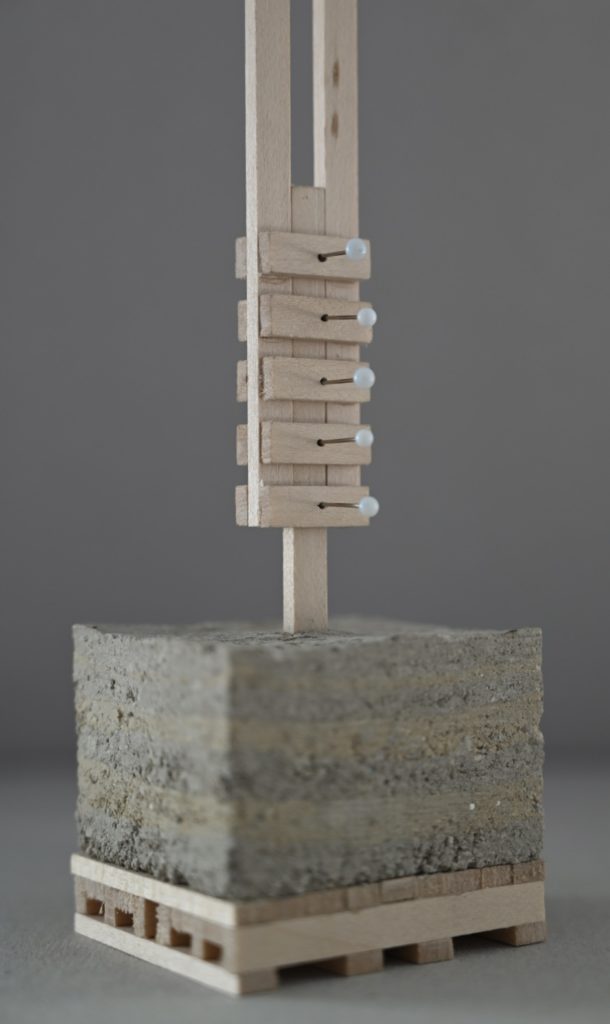
Finally, we designed a wooden base that would allow different modules to be placed around it, with anchoring points both at its top and at its foot. The modules can be added and taken out easily and can take various shapes, such as that of a « block separator » that can both create a new spatiality for children’s games, as well as create a backrest if people are to sit down on the bloc.

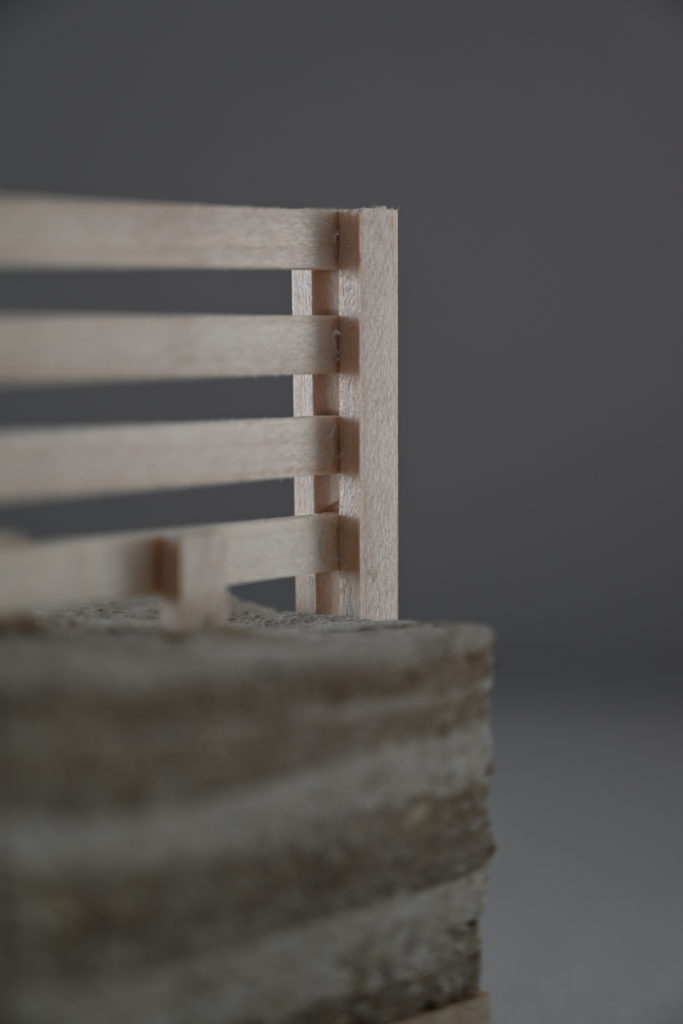
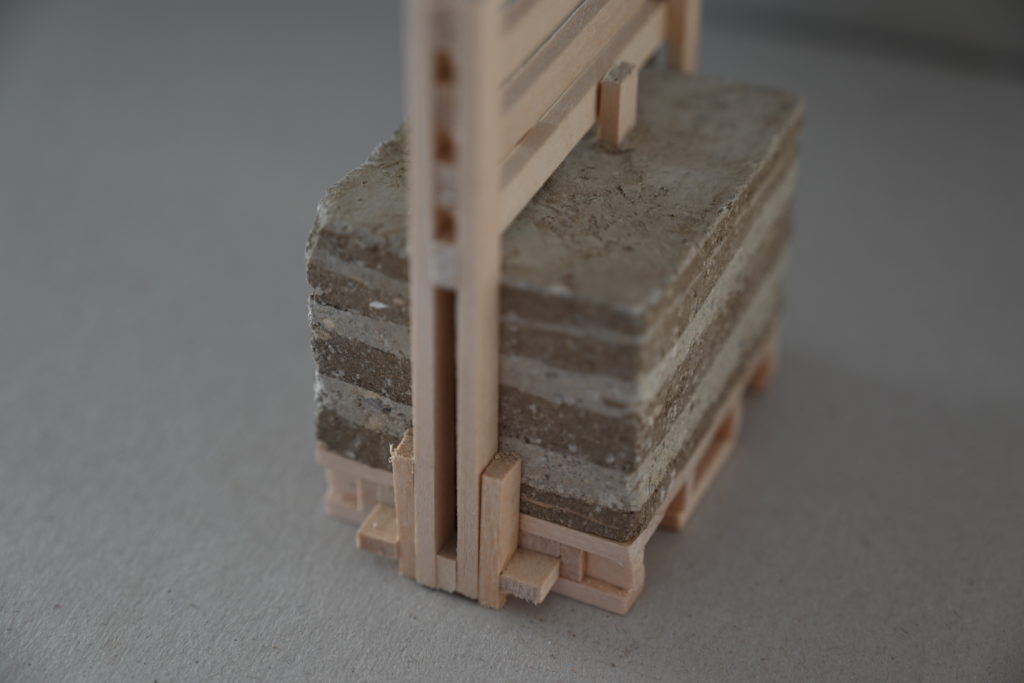

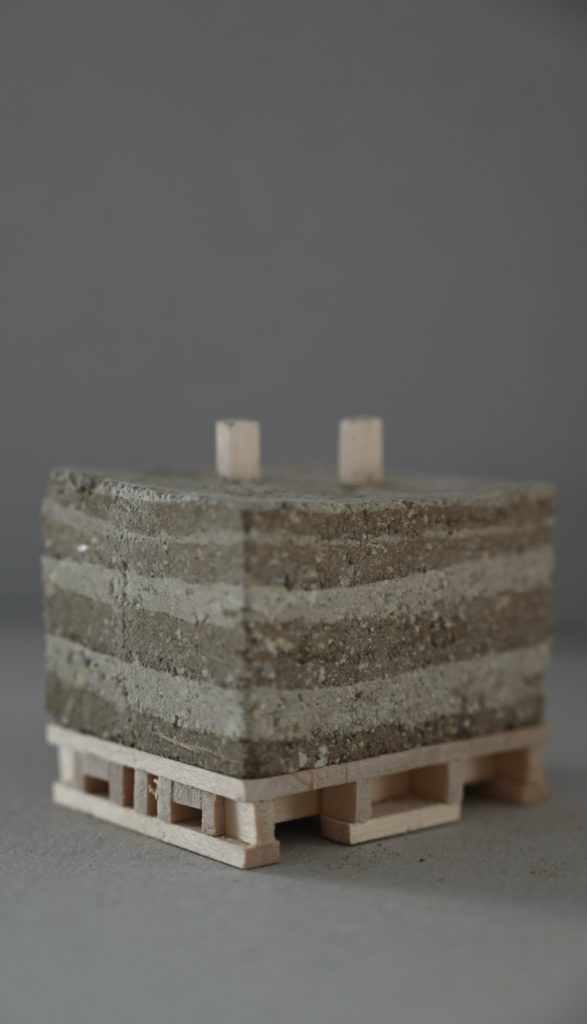
Scenarios and staging
Rather than creating fixed and immutable scenarios, we decided to come up with ideas for ways the blocks could interact with one another. The idea is to understand the relation between blocks and the spaces and voids they can create.

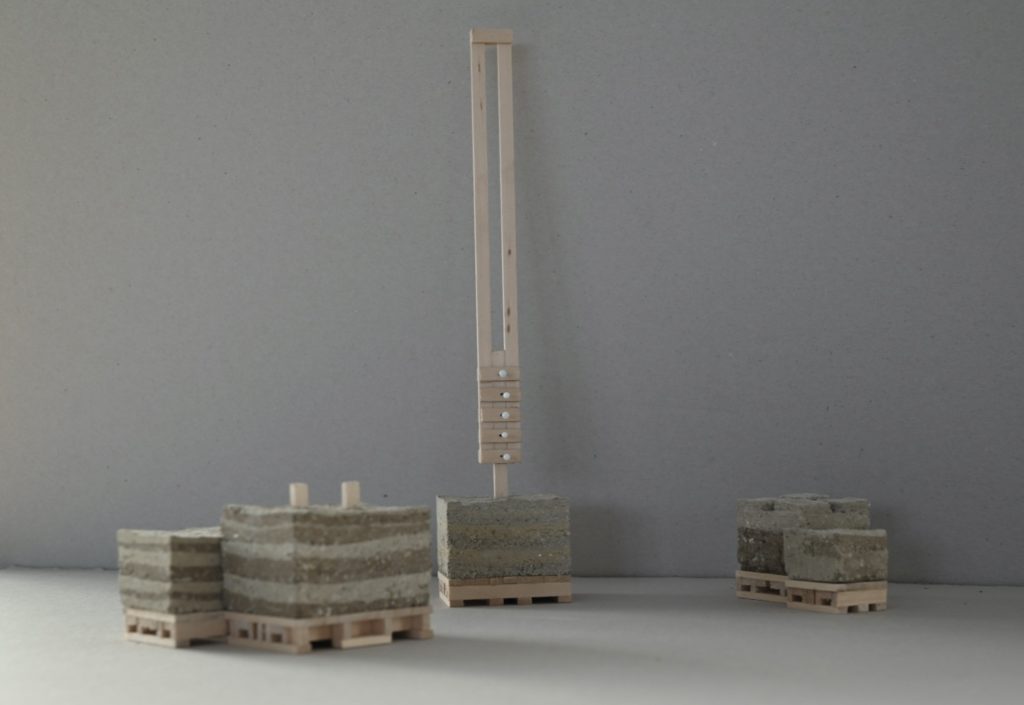
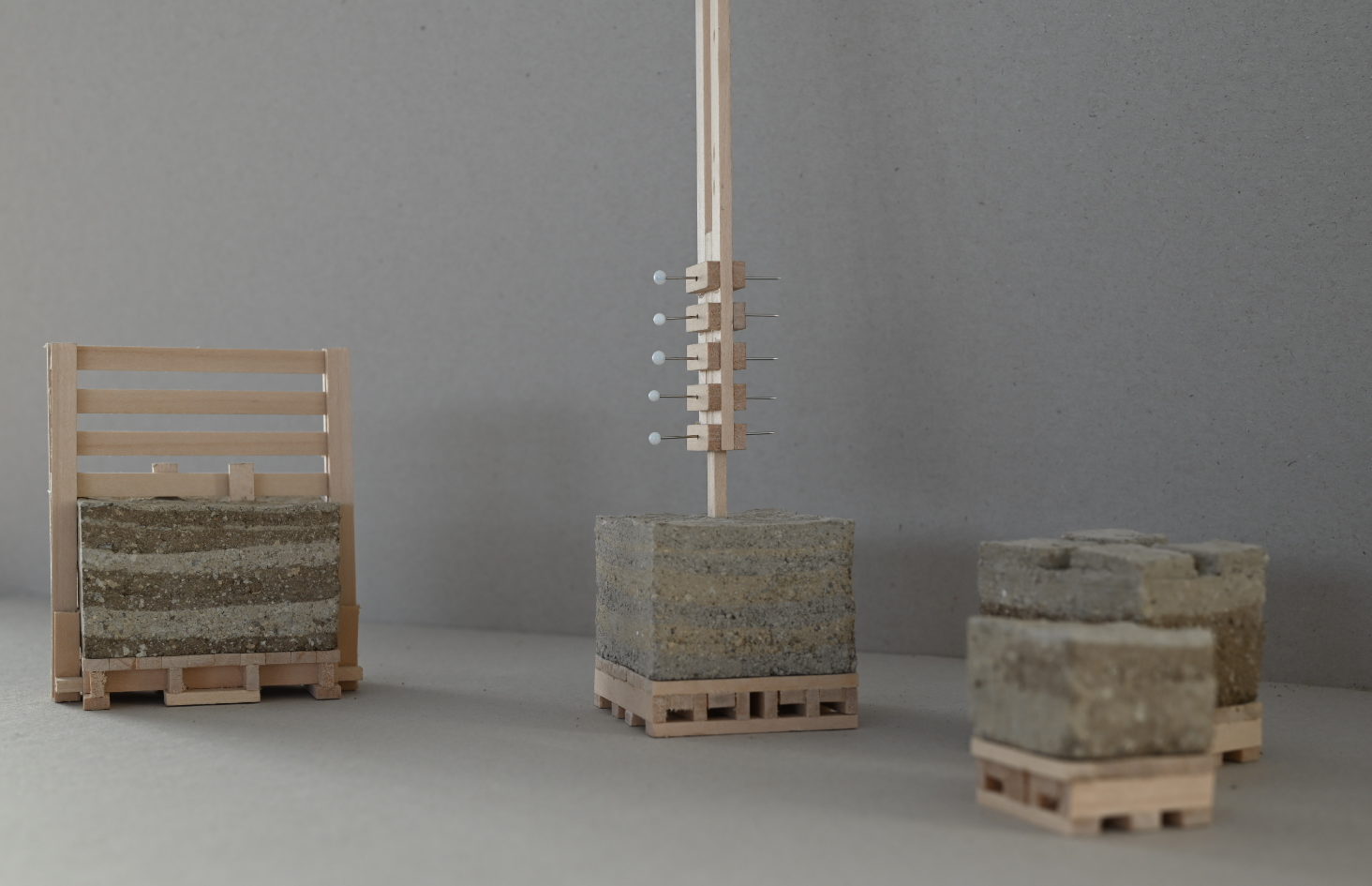
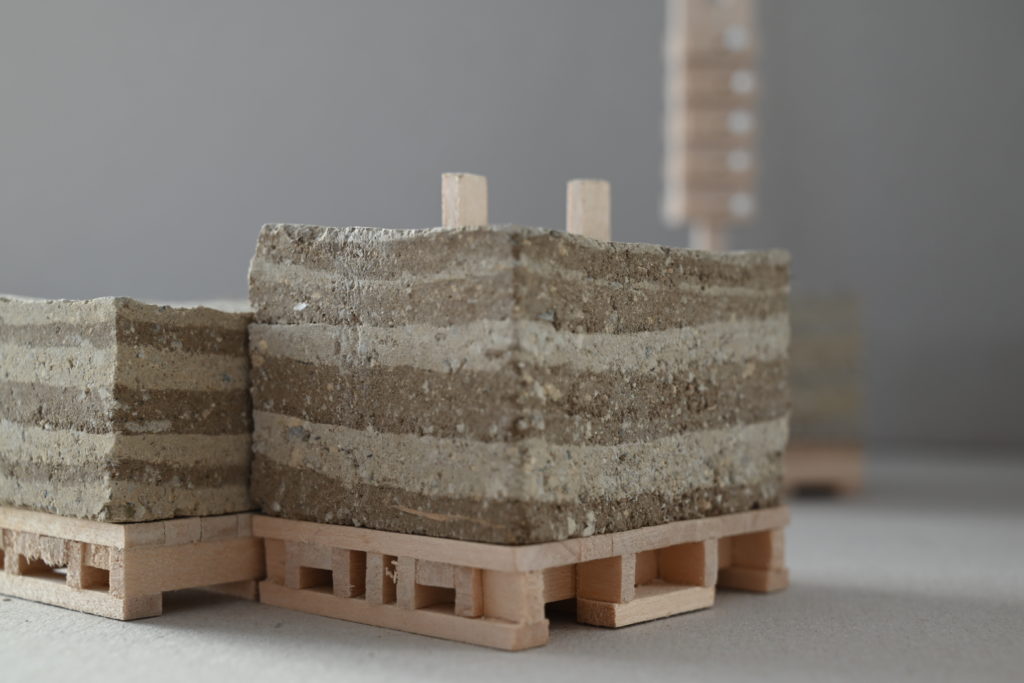
Those interactions were also studied in context, in relation to both pavement and organic soil.
